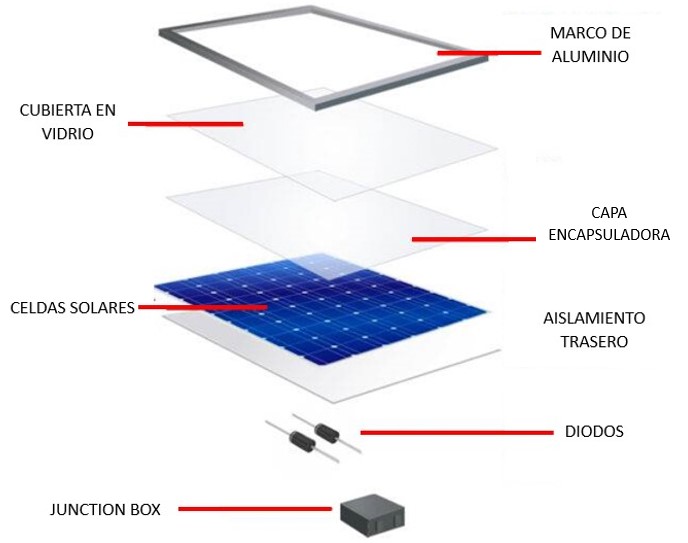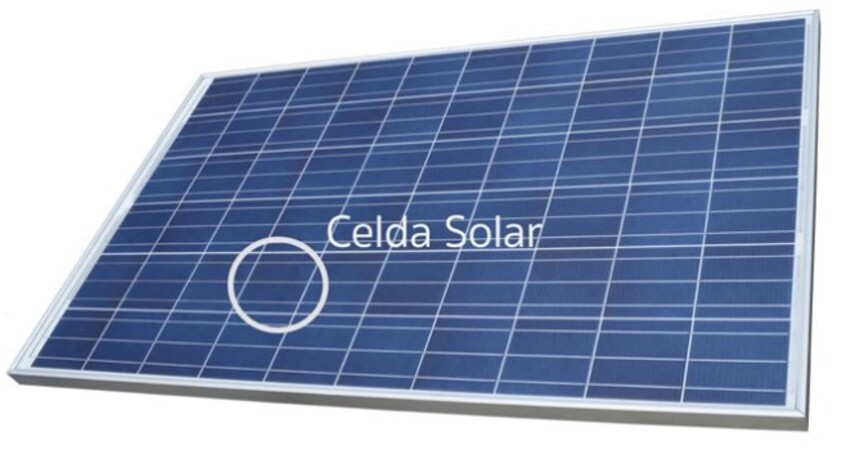Solar Energy
Learn about the parts of the photovoltaic solar panel
The photovoltaic solar panel is the core component of any solar energy system, as it converts sunlight into electricity. In this article, we describe its structure so you can understand the elements involved in this conversion.
If you are considering installing a photovoltaic system in your home, we recommend reading Photovoltaic solar panel: what you need to know before buying. Here, we discuss the main characteristics of this component and what you should consider when purchasing it.
Let’s look at these essential parts and their functionality. Let’s get started!
Structure of the photovoltaic solar panel

It’s worth noting that a high-quality photovoltaic solar panel is constructed with efficiency, functionality and durability in mind. Let’s look at each of its components.
Aluminum frame
This element serves as the perimeter protection for the entire structure of the photovoltaic solar panel and also acts as a base for its installation.
It must be weather-resistant and a good heat dissipator. That’s why it prefers those made of anodized aluminum, which meets these requirements.
Glass cover
This material has the characteristic of being low in iron content and of the tempered type. This makes it highly resistant to mechanical stresses and impacts, in addition to being a good transmitter of solar radiation
Encapsulating layer
It has the property of retaining the captured solar radiation and, at the same time, protects the solar cells. It is also called the EVA layer since it is made of Ethylene Vinyl Acetate.
The latter also allows the bonding of the solar cells with the glass cover while sealing the space against foreign elements. Choose a panel with EVA that does not lose transparency over time.
Solar cells

This is the most important element among those that make up the solar panel, as it is responsible for converting solar radiation into electrical energy.
They are made of a semiconductor material, with silicon being the most common and practical.
Our article Photovoltaic solar cells: what you need to know describes their characteristics and functionalities. Don’t miss out on reading it!
Rear insulation
It acts as a protector against weather elements and external factors, including dust, vapors, and moisture originating from the surface beneath the photovoltaic solar panel.
Ensure that the specifications of the solar panel indicate resistance to deterioration and aging, high temperatures, and low vapor emission.
Diodes
They are the ones that prevent the reduction of performance when shadows are cast on the surface of the panel. Maintain the flow of energy in a single direction. They are located in the Junction Box, which we will discuss next.
Junction Box
The electrical connections and interconnecting cables, as well as the diodes. It protects all these components, ensuring the proper functioning of the photovoltaic solar panel.
It is located on the back of the panel, on the rear insulation that provides protection against high temperatures.
As you may have observed, the components of the solar panel have the primary function of protecting and enhancing the attributes of the solar cells. With this, we want to convey that the type of solar cell is one of the most important parameters to consider.
At energydcac, we have published a large amount of content on this topic that will help you become a knowledgeable expert in photovoltaic solar panels. Read them all!
Likewise, we invite you to subscribe to our website to stay informed about the publication of our posts. Additionally, you can contact us anytime and from anywhere; it will be a pleasure for us to respond.


Pingback: Solar panels and photovoltaic systems: frequently asked questions. Part 2 - Energy DC/AC
Pingback: Connectors for an affordable solar energy system for your home - Energy DC/AC